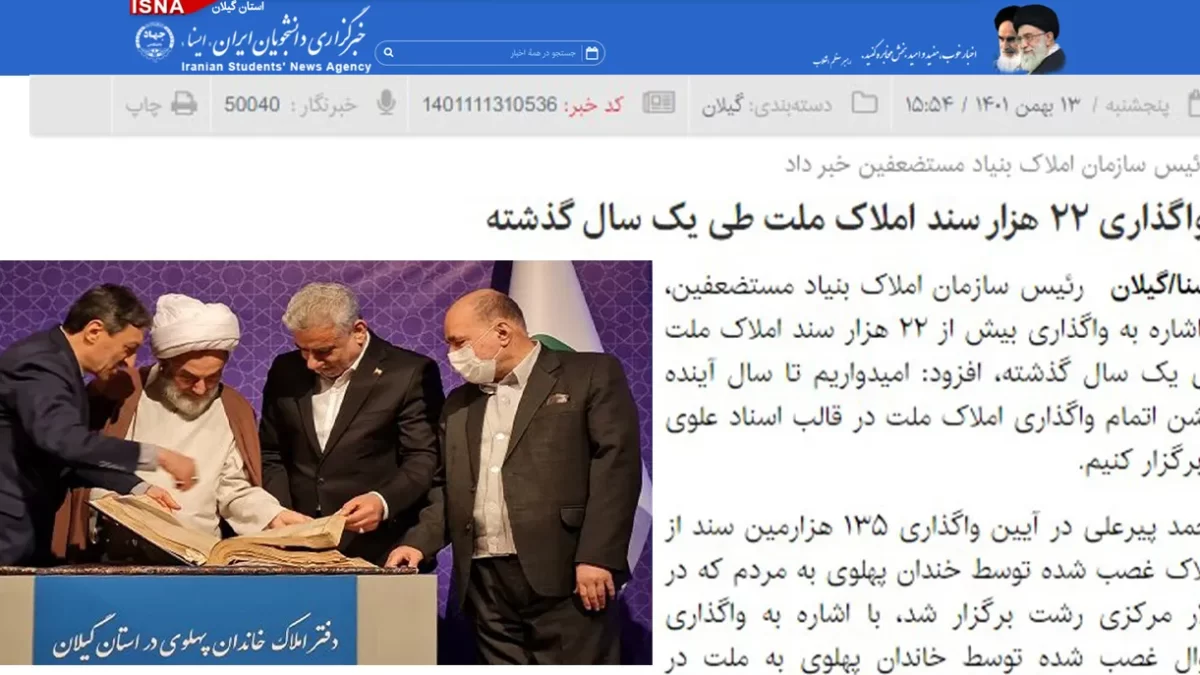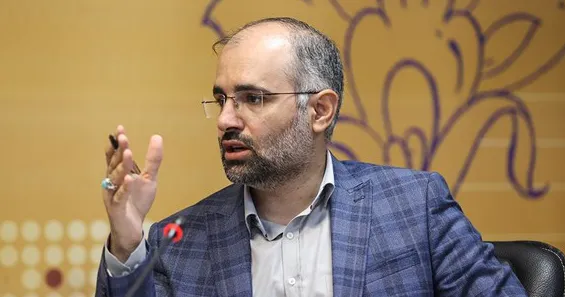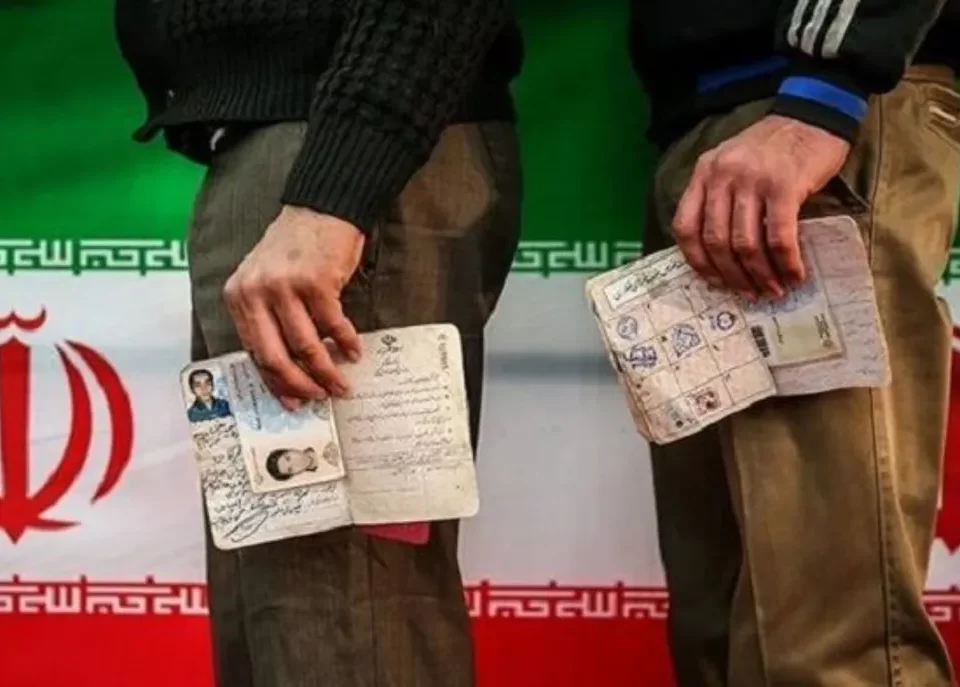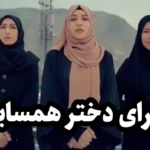
Media Review: Propaganda, the Dictator’s Plan for “Neighbor’s Daughter”
May 7, 2023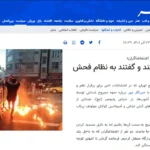
Media Review: Mehr News Agency and the Fake Story of a Basiji
May 7, 2023Advertising, propaganda, and public relations aim to influence the audience by using symbols, images, delivering information, and engaging people’s emotions. These three forms of communication have a direct impact on our beliefs about how to live, how to perceive social and political issues.
However, these three are not the same. The power to distinguish between advertising, propaganda, and public relations is important because it provides the audience with a broader perspective to recognize the explicit and hidden objectives conveyed by the messages and their impact on our minds, lifestyle, beliefs, and thoughts.
For example, let’s examine a report published by the head of the Properties Organization of the Destitute Foundation, titled “Transfer of 22,000 property deeds to the people over the past year,” on the ISNA news agency, on February 2, 2023.
The Destitute Foundation organized an event in Rasht called “The ceremony of transferring the 135,000th deed of properties seized from the Pahlavi dynasty to the people.” In this event, Mohammad Pireli, the head of the Properties Organization of the Destitute Foundation, stated regarding the transfer of over 22,000 property deeds to the people over the past year: “Today, we have handed over the 135,000th deed and hope to celebrate the completion of transferring national properties in the form of Alavi deeds next year.”
Is the report presented at this event advertising, propaganda, or public relations?
Advertising is a means to introduce an idea, a product, or a service to the audience without any hidden agenda. Advertising can be a form of propaganda because both aim to persuade public opinion. However, unlike advertising, which is an overt matter, propaganda is often not transparent. Therefore, recognizing propaganda is not always straightforward but can be highly complex.
On the other hand, unlike advertising and propaganda, which focus on influencing the audience’s minds in a one-way direction, public relations remains a two-way road. Public relations managers not only strive to present the performance, products, and ideas of their company or organization to the audience in an appealing manner but also gather feedback, opinions, interests, and desires of the audience and provide them to the organization’s managers to ensure higher acceptance of the final product in society.
What happened at this ceremony is more than advertising; it is propaganda. The hidden executors attempt to influence public opinion and convince the audience, through a series of false claims and information, that the Islamic Republic, unlike the Pahlavi regime, which was an oppressive regime, is working to return the seized properties to the people.
This article is not an advertisement because it does not directly state that its purpose is to promote the Islamic Republic system and undermine the Pahlavi regime. Instead, it attempts to mislead public opinion and control people’s minds through the tactic of “responding to values and needs of the audience,” known as a recognized propaganda tactic, by providing them with fake information in a targeted manner.
Propaganda doesn’t always rely on fake news; sometimes it seeks to influence the audience and lead them astray by using true or partially true news. However, in this report, it is evident that the information being published is fabricated. In the field of media, fake news refers to news that is artificially created, unreal, without a credible source or with a fake source, incomplete, and contains misleading information.
Why is the news about the transfer of 135,000 confiscated properties by the Pahlavi regime to the people by the fictitious Benevolent Foundation?
Because the Benevolent Foundation provides information that is not supported by valid documents. If the Benevolent Foundation had honesty, instead of using propaganda methods and providing unsupported information, it would rely on its public relations to gain the trust of the audience and increase public satisfaction with the performance of this institution, which is affiliated with the leader of the Islamic Republic, by providing all the information about the desired properties.
On the other hand, the information presented raises the question of why, if these properties were confiscated, the Islamic Republic continued this confiscation for 43 years and did not return them to the people sooner? And if these properties were confiscated, meaning they had a legitimate owner and the Pahlavi dynasty seized them, then instead of “giving them as alms” to the deprived, the Benevolent Foundation should return the properties to their rightful owners, because private ownership is recognized in the Islamic Republic, and the Foundation cannot give away others’ properties as alms. If these properties were also ownerless, then the accusation of confiscation is not valid.
In order for the audience to distinguish between fake news and real news:
– They should review the news source. Does the news have a source? Is the source reliable? Does the source support the news?
– They should not rely solely on the headline. Does the title of the article align and correspond with the information provided in the news?
– They should inquire about the author and narrator of the news. Is the narrator credible?
– They should be cautious about the timeline of events. Do the dates of the events align with each other?
In this news, it is evident that neither the documents of the alleged properties nor the list of individuals who own the properties are published, nor is the criteria for transferring the properties specified, nor is the geographical location of these properties mentioned. Most importantly, the Benevolent Foundation is an institution affiliated with the leader of the Islamic Republic, and its activities are more focused on propaganda and promoting the government’s policies and values rather than being people-centered.
Therefore, the assumption is that the information presented in this report is incorrect and fabricated. If in the future, this foundation publishes the documents and evidence of these transfers and explains what they have done with the confiscated properties of the people during the past 43 years and why they did not end this confiscation sooner, then it can be said that this claim is not fabricated.
Doubt about the accuracy of news and information published by media and government institutions, and having critical thinking and refraining from republishing fake information, is the way to counter fake news and propaganda. The work of propaganda is to suppress the power of critical thinking in the audience and mislead them.
مرور رسانهها؛ پروپاگاندای بنیاد مستضعفان با تبلیغ جعلی واگذاری املاک به مردم
آگهیهای تبلیغاتی، پروپاگاندا و روابط عمومیها، تلاششان این است که با توسل به نمادها و تصاویر، عرضه اطلاعات و درگیر کردن احساسات مردم، بر مخاطب تاثیر بگذارند. این سه شکل ارتباطی، تاثیر مستقیمی بر باور ما نسبت به طرز زندگی کردن، چگونه دیدن مسائل اجتماعی و سیاسی دارند.
اما این سه یکی نیستند. قدرت تشخیص و تمیز تبلیغات، پروپاگاندا و روابط عمومی از یکدیگر، از این جهت مهم است که به مخاطب، میدان دید وسیعتری میدهد برای شناخت اهداف آشکار و پنهان منتقل کننده پیام، و تاثیری که بر ذهن، سبک زندگی، باور و اندیشه ما دارند.
برای نمونه به این گزارش ریاست سازمان املاک بنیاد مستضعفان، که روز ۱۳بهمن۱۴۰۱، با عنوان «واگذاری ۲۲ هزار سند املاک ملت طی یک سال گذشته»، در خبرگزاری «ایسنا» منتشر شده، دقت کنید.
بنیاد مستضعفان، مراسمی در رشت با عنوان «آیین واگذاری ۱۳۵هزارمین سند از املاک غصب شده خاندان پهلوی به مردم»، برگزار کرده است. «محمد پیرعلی»، رییس سازمان املاک بنیاد مستضعفان، در این مراسم با اشاره به واگذاری بیش از ۲۲ هزار سند املاک ملت طی یک سال گذشته، گفته: «امروز ۱۳۵هزارمین سند را واگذار کردیم و امیدواریم تا سال آینده جشن اتمام واگذاری املاک ملت در قالب اسناد علوی را برگزار کنیم.»
گزارش ارائه شده در این مراسم، تبلیغات، پروپاگاندا یا روابط عمومی است؟
تبلیغات راهی است برای شناساندن یک ایده، یک محصول و یا یک سرویس به مخاطب، بدون هرگونه مخفیکاری. تبلیغات میتواند فرمی از پروپاگاندا باشد، چراکه، کار هر دو، اقناع کردن افکار عمومی است. اما پروپاگاندا برخلاف تبلیغات که امری آشکار است، معمولا واضح نیست، به همین دلیل تشخیص پروپاگاندا همیشه ساده نیست، بلکه میتواند خیلی پیچیده باشد.
از سوی دیگر، برخلاف تبلیغات و پروپاگاندا که یکطرفه ذهن مخاطب را نشانه رفته و میکوشد بر او تاثیر بگذارد، روابط عمومی بهسان یک جاده دوطرفه میماند. مدیران روابط عمومی علاوهبر اینکه میکوشند عملکرد، محصول و ایده شرکت یا سازمان خود را به شکلی زیبا به مخاطب عرضه کنند، فیدبک و نظر، علایق و خواستهای مخاطبان را هم جمعآوری و به مدیران سازمان عرضه میکنند تا محصول نهایی پذیرش بالاتری در جامعه داشته باشد.
آنچه در این آیین اتفاق افتاده، بیش از آنکه تبلیغات باشد، پروپاگانداست. چراکه مجریان پنهانی میکوشند با مجموعهای از ادعاها و اطلاعات جعلی، بر افکار عمومی تاثیر، و مخاطب را متقاعد سازند که جمهوری اسلامی، نظامی مردمی و برخلاف نظام پهلوی که رژیمی غاصب بود، میکوشد املاک غصب شده مردم را به مردم بازگرداند.
این گزارش تبلیغات نیست، چون مستقیم به مخاطب نمیگوید که در پی تبلیغ نظام جمهوری اسلامی و تخریب نظام پهلوی است، بلکه میکوشد با استفاده از تاکتیک «پاسخگویی به ارزشها و نیاز مخاطبان»، به عنوان یک تاکتیک شناخته شده پروپاگاندا، افکار عمومی را گمراه و ذهن مردم را با اطلاعات جعلی و به صورت هدفمند در کنترل خود درآورند.
پروپاگاندا همیشه توسل به اخبار جعلی نیست، بلکه گاهی با استفاده از اخبار درست و نیمه درست میکوشد بر ذهن مخاطب تاثیر، و او را منحرف سازد. اما در این گزارش مشخص، اطلاعات منتشره جعلی است. در علم رسانه خبر جعلی یا Fake News خبری است ساختگی، غیر واقعی، بدون منبع یا با منبع جعلی، خبرناقص و حاوی اطلاعات گمراه کننده.
چرا خبر واگذاری ۱۳۵ هزار ملک غصب شده توسط نظام پهلوی به مردم از سوی بنیاد مستضعفان جعلی است؟
زیرا بنیاد مستضعفان اطلاعاتی ارائه میکند که با اسناد معتبر حمایت نمیشود. بنیاد مستضعفان اگر صداقت داشت، به جای استفاده از شیوههای پروپاگاندا و ارائه اطلاعات بدون پشتوانه، از روابط عمومی خود کمک میگرفت تا با ارائه تمام اطلاعات املاک مورد نظر، اعتماد مخاطب را جلب، و رضایت عمومی را نسبت به عملکرد این نهاد وابسته به رهبر جمهوری اسلامی را افزایش دهد.
از سوی دیگر اطلاعات ارائه شده این سوال را ایجاد میکند که اگر این املاک غصبی بوده، چرا جمهوری اسلامی ۴۳ سال به این غصب ادامه داده و زودتر آنها را به مردم واگذار نکرده است؟ و اگر این املاک غصبی بوده، یعنی مالک حقیقی دارد و خاندان پهلوی آن را غصب کرده، بنابراین بنیاد مستضعفان به جای «هبه» آن به محرومان، باید املاک را به صاحبان حقیقی آن باز میگرداند، چراکه اصل مالکیت خصوصی در جمهوری اسلامی به رسمیت شناخته شده و بنیاد نمیتواند املاک دیگران را هبه کند. اگر این املاک هم بلاصاحب بوده، که عنوان غصب بر آن صادق نیست.
مخاطب برای اینکه خبر جعلی را از خبر واقعی تشخیص دهد:
- باید منبع خبر را مرور کند، آیا خبر دارای منبع است؟ آیا منبع معتبر است؟ آیا منبع ارجاعی، خبر را حمایت میکند؟
- نباید به تیتر اخبار بسنده کند؛ آیا تیتر مطلب با اطلاعات مندرج در خبر هماهنگی و تطابق دارد؟
- باید بپرسد نویسنده و راوی خبر کیست؛ آیا راوی معتبر است؟
- باید روی تاریخ روایتها حساس باشد؛ آیا تاریخ وقایع با یکدیگر همخوانی دارد؟
در این خبر مشخص، نه اسناد املاک ادعایی منتشر شده، نه فهرست افرادی که املاک به آنها تعلق گرفته روشن است، نه معیار واگذاری املاک مشخص است، نه محل جغرافیایی این املاک مشخص شده، و از همه مهمتر اینکه بنیاد مستضعفان نهادی وابسته به رهبر جمهوری اسلامی و مدیران آن منصوبان حکومت هستند و فعالیتهای آنها بیش از آنکه مردممحور باشد، پروپاگاندا و تبلیغ سیاستها و ارزشهای حکومت است.
بنابراین، فرض بر نادرستی و جعلی بودن اطلاعات مندرج در این گزارش است. اگر در آینده این بنیاد اسناد و مدارک این واگذاریها را منتشر کرد و توضیح داد که در طول ۴۳ سال گذشته با اموال غصب شده مردم چه میکرده و چرا زودتر به این غصب پایان نداده، آن وقت میتوان گفت این ادعا جعلی نیست.
تردید نسبت به صحت اخبار و اطلاعات منتشره توسط رسانهها و نهادهای حکومتی و داشتن تفکر انتقادی و پرهیز از بازنشر اطلاعات جعلی، راه مقابله با اخبار جعلی و پروپاگانداست. کار پروپاگاندا، ساقط کردن قدرت تفکر مخاطب و گمراه کردن آنان است.

